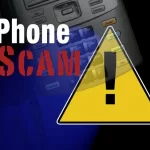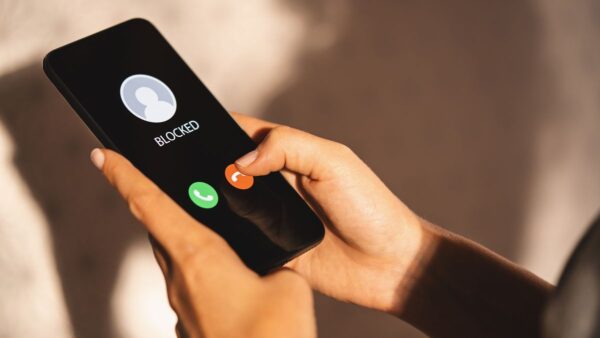In the digital age, scams and fraudulent activities have found new avenues to exploit unsuspecting individuals. One such deceptive method that has gained prominence in recent times is the US9514961195221 scam fake text messages. These messages often catch recipients off guard, enticing them into potential financial and personal risks. In this comprehensive guide, we will delve deep into the US9514961195221 scam fake text messages, understanding how they work, the red flags to watch out for, and the steps to take if you’ve fallen victim to such a scam.
Introduction
The Emergence of Scam Text Messages
With the widespread use of smartphones and the internet, scammers have adapted their tactics to exploit these technologies. One such adaptation is the use of scam text messages, also known as SMS phishing or smishing. These fraudulent messages are designed to deceive individuals into providing personal information, clicking on malicious links, or making financial transactions to benefit the scammer.
The US9514961195221 Scam
The US9514961195221 scam is a specific variant of smishing that has gained notoriety for its ability to lure victims into believing they have received a lucrative opportunity or a critical message. In this article, we will explore how this scam operates, what warning signs to look out for, and how to protect yourself from falling victim to such schemes.
How the US9514961195221 Scam Fake Text Messages Work
The Anatomy of a Scam Message
US9514961195221 scam fake text messages typically follow a similar pattern. They often start with a message that appears urgent or enticing, such as claiming you’ve won a prize, have an outstanding payment, or need to take immediate action to avoid legal consequences. These messages are crafted to create a sense of urgency and curiosity in the recipient.
The Trap: Tempting Offers
To make the scam more convincing, the text message may contain a link or phone number that the recipient is instructed to contact. These links often lead to fake websites or call centers operated by scammers. Once the victim engages with the scammer, they may be asked for personal information, bank details, or even instructed to make payments to resolve a fabricated issue.
Red Flags and Warning Signs
Recognizing the signs of a US9514961195221 scam fake text message is crucial to avoid falling victim to it. Here are some common red flags and warning signs:
Grammatical and Typographical Errors
Scam messages often contain spelling mistakes, grammatical errors, or awkward phrasing. Legitimate organizations typically maintain a higher standard of communication.
Unsolicited Communication
If you receive a text message from an unknown sender or an organization you haven’t interacted with before, be cautious. Unsolicited messages are a common tactic used by scammers.
Unknown Sender
Check the sender’s number or name. Scammers often use generic or unfamiliar sender names to avoid suspicion.
Urgent Calls to Action
Scam messages frequently use urgent language, insisting that you must act immediately. This urgency is designed to prevent recipients from taking the time to think critically about the message.
Requests for Personal Information
Be extremely cautious if a message requests personal information, such as your Social Security number, bank account details, or credit card information. Legitimate organizations do not request such information through text messages.
What to Do If You’ve Fallen Victim
If you suspect you’ve fallen victim to a US9514961195221 scam or a similar smishing attempt, here are the steps you should take:
Step 1: Disconnect from the Scammers
If you’re in communication with the scammer, immediately cease all contact. Hang up the phone or close any web browser windows.
Step 2: Change Your Passwords
Change the passwords to your email, banking, and any other accounts that may have been compromised. Use strong, unique passwords for each account.
Step 3: Monitor Your Financial Accounts
Monitor your bank and credit card statements for any unauthorized transactions. If you notice any suspicious activity, report it to your bank or credit card issuer.
Step 4: Report the Scam
Report the scam to your mobile carrier, the Federal Trade Commission (FTC) in the United States, and any other relevant authorities in your country. Provide them with as much information as possible about the scam.
Step 5: Educate Yourself and Others
Share your experience with friends and family to help them recognize and avoid similar scams. Knowledge is a powerful tool in preventing future victimization.
Preventing Scams: Tips and Best Practices
To reduce your risk of falling victim to scams like the US9514961195221 scam, consider implementing the following tips and best practices:
Keep Personal Information Private
Never share sensitive personal information, such as your Social Security number or financial details, in response to unsolicited messages.
Verify the Sender
Verify the legitimacy of any message or call you receive. If it’s from an organization or company, independently look up their contact information and call them directly.
Educate Yourself and Others
Stay informed about common scam tactics and share this knowledge with your friends and family. Awareness is a powerful defense.
Use Trusted Sources for Information
Rely on trusted sources for information, especially when it comes to financial decisions or personal data. Be cautious of information received through text messages or unsolicited emails.
Use Security Software
Install and regularly update security software on your devices to protect against malware and phishing attempts.
Stay Informed About Current Scams
Keep up-to-date with the latest scams and frauds by following official government websites and consumer protection agencies.
FAQs (Frequently Asked Questions)
1. What is the US9514961195221 scam?
The US9514961195221 scam is a type of scam text message, also known as smishing, that attempts to deceive individuals into providing personal information or taking actions that can lead to financial loss or identity theft. It often involves fake offers, urgent messages, and requests for sensitive data.
2. How do I recognize a US9514961195221 scam fake text message?
You can recognize a US9514961195221 scam fake text message by looking for red flags such as grammatical errors, unsolicited communication, unknown senders, urgent calls to action, and requests for personal information. Be cautious of any message that seems too good to be true or requires immediate action.
3. What should I do if I receive a US9514961195221 scam text?
If you receive a US9514961195221 scam text, do not engage with the sender. Do not click on any links or provide any personal information. Delete the message immediately.
4. I clicked on a link in a US9514961195221 scam text. What should I do?
If you accidentally clicked on a link in a US9514961195221 scam text, disconnect from the website or call immediately. Clear your browsing history and run a security scan on your device to check for malware or viruses.
5. Can I report US9514961195221 scam fake text messages?
Yes, you can report US9514961195221 scam fake text messages to your mobile carrier and the Federal Trade Commission (FTC) in the United States. Reporting such messages can help authorities track and combat scamming activities.
6. How can I protect myself from falling victim to such scams?
To protect yourself from falling victim to scams like the US9514961195221 scam, follow these tips:
- Keep personal information private.
- Verify the sender’s identity.
- Educate yourself and others about common scam tactics.
- Use trusted sources for information.
- Install and regularly update security software on your devices.
- Stay informed about current scams by following official government and consumer protection websites.
Conclusion
In the age of digital communication, it’s crucial to remain vigilant against scams like the US9514961195221 scam fake text messages. By educating yourself about the warning signs, practicing caution, and sharing knowledge with others, you can reduce the risk of falling victim to these deceptive schemes. Remember that staying informed and proactive is your best defense against scammers who seek to exploit your trust and information.
Stay vigilant, stay safe, and together, we can combat these fraudulent activities in the digital world.





